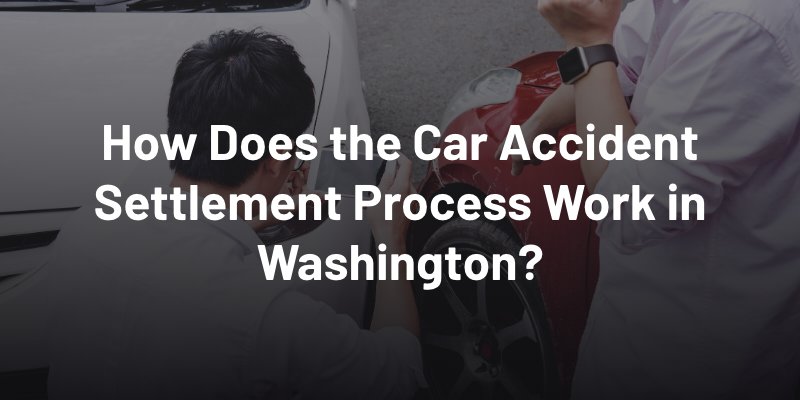 Car accidents are frightening and traumatic, especially when they result in injuries as well as property damage to a vehicle. After a car accident, expenses quickly mount for victims who may find medical bills coming in at the same time they are unable to return to work due to their injuries. A successful car accident claim against the party at fault for the accident often results in a settlement offered by the negligent driver’s insurance company. But what is the process that takes a car accident victim from the trauma following the accident to finally having a check for compensation in their hand? How does the settlement process in Washington work?
Car accidents are frightening and traumatic, especially when they result in injuries as well as property damage to a vehicle. After a car accident, expenses quickly mount for victims who may find medical bills coming in at the same time they are unable to return to work due to their injuries. A successful car accident claim against the party at fault for the accident often results in a settlement offered by the negligent driver’s insurance company. But what is the process that takes a car accident victim from the trauma following the accident to finally having a check for compensation in their hand? How does the settlement process in Washington work?
Car Accident Claim Investigation in Washington
Washington has fault-based insurance laws. Under the state’s pure comparison negligence laws, car accident victims can recover damages even if they are partly at fault for the accident. For example, even if they are 90 percent at fault they may recover 10 percent of their total damages. If their damages equal $100,000 they can recover $10,000. This system results in both parties in an accident—or all parties in a multi-car accident—to investigate the accident to prove how much each party contributed to the crash.
Under Washington Law, Chapter 4.22 RCW.005, the law states:
“any contributory fault chargeable to the claimant diminishes proportionately the amount awarded as compensatory damages for an injury attributable to the claimant’s contributory fault, but does not bar recovery.”
Typically, a car accident injury victim hires an experienced Edmonds car accident lawyer to investigate the accident by examining the police report, viewing any available photos or videos, deposing eyewitnesses, and consulting with accident reconstruction experts. Once the attorney has evidence of another party’s fault in the accident they file a claim with the at-fault party’s insurance company. The insurer assigns an adjuster to the case who also investigates. Often, the insurance adjuster tries to assign an unjust percentage of fault to the injury victim to minimize the amount they must pay out on the claim. If the injury victim did not contribute to the fault, the attorney protects their right to full compensation.
Careful Calculation of The Victim’s Damages
After an Edmonds personal injury attorney investigates the cause of the accident and determines each driver’s percentage of fault, they review the victim’s medical expenses and consult with medical experts about the impacts of the injury, the amount of time for recovery, if a full recovery is possible, and the amount of income loss the victim faces. They make a careful calculation of all of the victim’s economic damages and calculate an amount of compensation for non-economic damages like pain and suffering. Then, the attorney presents the evidence and damages in a demand package to the insurer of the party at fault. At-fault parties in car accidents are usually another driver, but in less common cases it could be a negligent road maintenance agency or the manufacturer of a defective car part.
Negotiating a Settlement Offer
Sometimes the insurance company of the at-fault party offers the victim a fast settlement. In many cases, an early settlement offer is only a fraction of the full amount available to the victim and the insurer makes the offer before the injury victim knows the full extent of their damages. The victim may accept the early offer or their attorney may make a counter-offer and begin negotiations for a larger settlement. In some cases, all parties may attend mediation sessions to work out a settlement agreement. If both parties cannot reach a mutually acceptable settlement agreement, the case proceeds to court for litigation so a jury decides the amount of compensation and awards it to the victim if they win the case.
Under RCW 4.16.080, Washington has a three-year statute of limitations for filing personal injury lawsuits for car accident injuries. If a case goes to court, it must be within the three-year time limit.